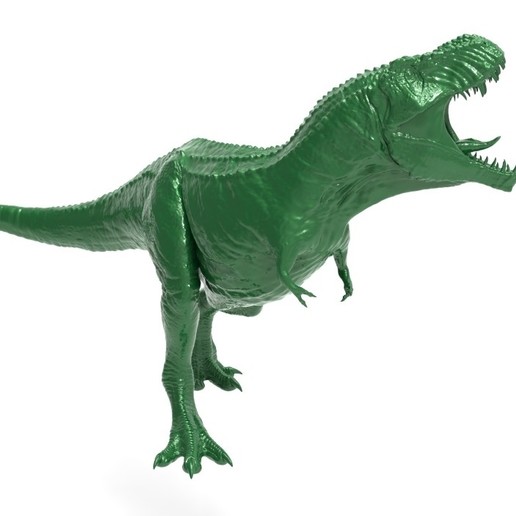
T-REX
cults3d
Here's a neutral summary of the text: Social behavior and pathology are topics of ongoing research on Tyrannosaurus rex. Some scientists suggest that T. rex may have been pack hunters, citing evidence such as fossilized trackways from the Upper Cretaceous Wapiti Formation in British Columbia, Canada, which show three tyrannosaurids traveling in the same direction. However, this theory has been criticized for not being peer-reviewed and relying on analogy to a different species. Evidence of intraspecific attack has also been found in a juvenile Tyrannosaurus nicknamed Jane, whose skull showed healed puncture wounds that likely came from another juvenile T. rex. Pathology studies have examined evidence for stress fractures and tendon avulsions in theropod dinosaurs, including T. rex. One study found that one of 81 Tyrannosaurus foot bones had a stress fracture, while none of the 10 hand bones did. Another study found that smooth-edged holes in the skulls of several specimens might have been caused by Trichomonas-like parasites. There is also evidence of cannibalism among T. rex individuals, with tooth marks on their bones indicating wounds caused by combat with another T. rex. Other tyrannosaurids may have also practiced cannibalism. Overall, research on T. rex social behavior and pathology continues to uncover new insights into the lives of these fascinating creatures.
With this file you will be able to print T-REX with your 3D printer. Click on the button and save the file on your computer to work, edit or customize your design. You can also find more 3D designs for printers on T-REX.
